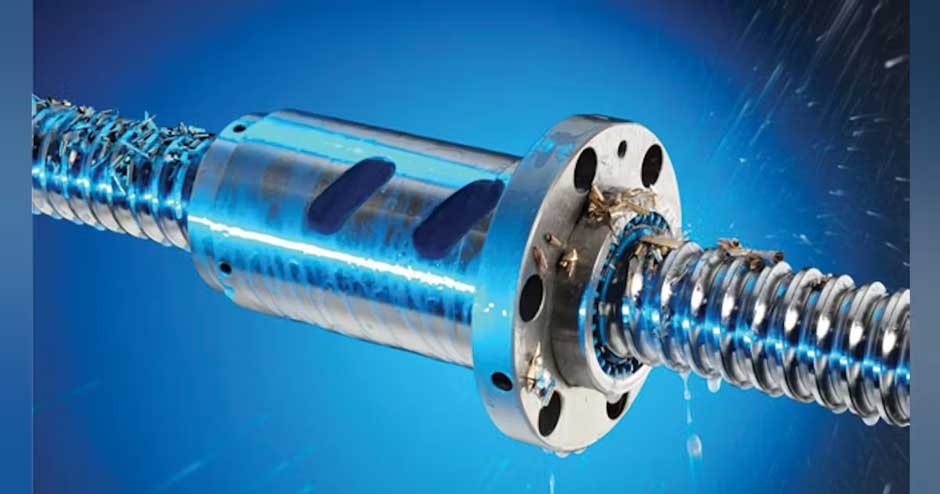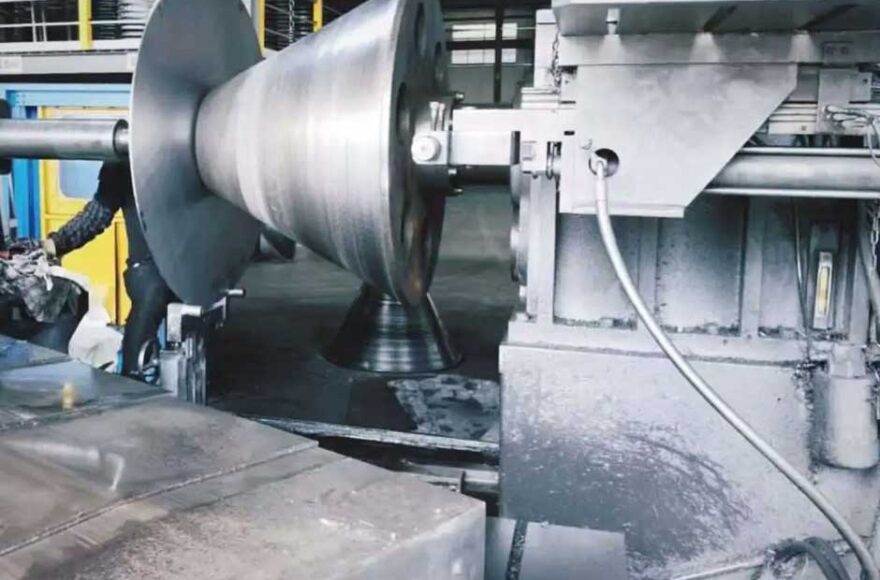The Essentials of Ball Screw Repair and Maintenance

A ball screw is a precise mechanical component that converts rotational motion into linear motion. Aerospace, CNC machining, robotics, and manufacturing industries could not continue without this device. A ball screw has a threaded shaft and a nut that contains recirculating balls and bearings or supports. The balls move between the nut and screw to reduce friction and increase efficiency when compared to conventional lead screws.
Industries use ball screws because they allow for precise positioning. These devices can handle high load capacities while operating smoothly. Any application that requires accuracy may benefit from the use of these devices. However, operators must monitor the ball screws as contamination and misalignment can lead to issues. The operator may notice that the performance has decreased, more energy is being consumed, and they’re experiencing expensive downtime routinely.
To prevent these issues, operators must regularly maintain the ball screws. Doing so extends their lifespan, which can reach millions of cycles when conditions are optimal. Neglect, however, can shorten the lifespan of the ball screw and necessitate ball screw repair solutions.
The Importance of Ball Screw Maintenance
Regular upkeep of ball screws ensures minor problems don’t escalate and lead to catastrophic failures. The machines where these screws are used will be accurate, consistent, and efficient. For instance, any slight backlash or lash in a CNC machine can compromise part quality. The materials may need to be scrapped or reworked. Eliminating this play between the screw and nut will prevent these problems from arising.
Maintaining these devices also helps optimize operational costs. The company won’t need to worry about energy losses related to friction or the need for frequent replacements. When a ball screw sustains damage, it may be repaired. This repair will restore its functionality and save the business money, as repairs typically cost significantly less than new units. In fact, it is estimated that a repair can save up to 90% when compared to purchasing a replacement. The extent of the damage plays a role in the repair cost. Being proactive ensures the company remains aligned with modern manufacturing principles, such as predictive maintenance.
Common Problems Seen With Ball Screws
Operational stresses and environmental factors are common causes of problems with ball screws. The grooves where the balls roll may deteriorate due to constant loading and other factors. The user may notice scoring, pitting, or brinelling. If any dust, debris, or coolant enters the groove, this process is accelerated because these contaminants act as abrasives.
If the groove is not adequately lubricated, overheating and spalling become concerns. Furthermore, the screw and supporting structures must remain in alignment. Any misalignment can lead to uneven wear, reduced accuracy, and vibrations. High-speed applications are of particular concern as thermal expansion can exacerbate these problems.
Operators must monitor the machines and take immediate action if they hear any grinding, whining, or other unusual noises. Increased torque requirements are a sign that something is wrong within the machine, and the same holds for vibrations or excessive heat. Positional inaccuracies must be investigated to determine the source of the problem. When unstable positioning or reverse error is seen, the nut or bearing in the ball screw is likely at fault.
Effective Maintenance
Every machine requires a structured maintenance plan tailored to its frequency of use. Regular inspections and cleaning are crucial for identifying problems early. Operators should visually and manually inspect the machines for debris, damage, or play. Tools are needed to measure axial runout and backlash.
When cleaning the ball screw, the operator needs a lint-free cloth and mild solvent to remove any dust and debris without harming the surfaces. Abrasives could lead to additional wear, so they must be avoided at all costs. When the machine operates in a dusty environment, it is recommended to perform weekly cleanings to ensure that no buildup interferes with the proper recirculation of the ball.
When conducting this maintenance, the operator must lubricate the ball screw. Doing so minimizes friction while dissipating heat. Furthermore, it protects the device from corrosion. Dry running a ball screw can cut its lifespan in half; therefore, operators should never operate the ball screw without lubrication. If the ball screw operates under low-speed, high-load scenarios, grease is best. For high-speed operations, use oil as the lubricant.
Apply this lubricant evenly and remove any excess that could attract dirt. When maintaining an automated system, incorporate lubrication ports or wipers to ensure the consistent delivery of grease or oil. Operators should check the lubricant condition every 1,000 to 5,000 hours of use to determine when more is needed. Any discoloration or particulates are a sign that the machine needs additional lubrication.
The operator must ensure the screw remains parallel to the guides and has the proper support. Any misalignment puts excessive wear on the components, so the operator should have precision tools available to verify and correct any alignment issues. All connections must also be examined for any that have become loose due to the machine’s vibrations.
Ball Screw Repairs
At times, ball screws require repair. The repair team examines the ball screw to determine the necessary steps to take. They inspect the ball screw by measuring the lash to assess the extent of the wear. The next step involves removing any old lubricant and debris before replacing or resizing the balls. The amount of time needed to complete the repair depends on the severity of the damage.
Installation following a repair is also critical. The flanges must be mounted before the wipers are installed. The operator must preload the nuts and lubricate the ball screw before placing it in the machine. This process is not complete until the ball screw has been tested for smooth operation. The operator should focus on the torque rather than the feel.
Preventing the Need for Future Repairs
Facility managers need to emphasize the importance of environmental cleanliness to minimize contamination and reduce the need for ball screw repairs. Proper preloading when initially setting up the ball screw is crucial to reducing the risk of premature wear. The operator must also compensate for thermal effects. Overloading can lead to the need for early repairs, so operators must ensure they do not overload these devices. Care needs to be taken before the ball screw is installed. It should be stored in protective packaging to safeguard its integrity.
Choosing a Repair Provider
Facility managers must choose a reputable repair service. Ensure the service has advanced inspection tools and the proper ISO certification. Confirm that they offer a warranty on all repairs. Companies that can combine regular professional servicing with routine maintenance can extend the life of a ball screw by two to three times.
Ball screws are essential in many industries today. To get the most out of these devices, operators must ensure that preventive maintenance measures are implemented promptly before a repair is needed. Routine inspections, regular lubrication, and alignment enhance the performance of these devices while minimizing costs. For these reasons and others, every company should prioritize ball screw maintenance and repair.


